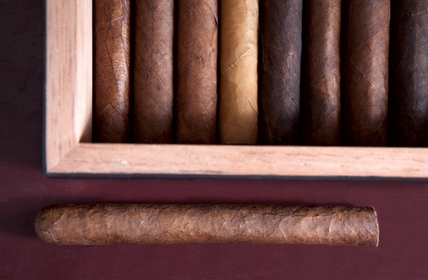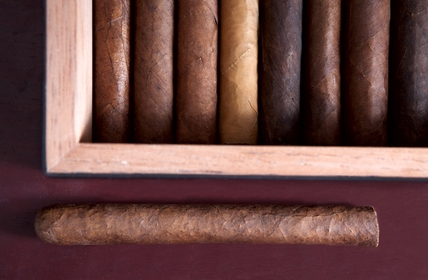Entertainment
Cigars From Christopher Columbus To Facebook

A brief history of the cigar
When Christopher Columbus landed in the Indies in 1492, he found the inhabitants drying and smoking tobacco leaves. When he returned to Europe he brought this strange new custom with him. Within fifty years, smoking was all the rage in Europe and in less than 100 years, it was a worldwide phenomenon. While we wouldn’t necessary recognize what they were smoking as cigars, smoking tobacco goes back to the ancient Mayans. In fact, modern cigar aficionados might not even recognize what passed as cigars as recently as 100 years ago. Modern quality control, humidification systems, and customer preference have shaped the cigars available today.

Modern cigars
Today’s cigars are a feat international cooperation. If you were to split a cigar lengthwise down the middle, you would see three distinctive parts. The first part, called the filler, is the inside of the cigar. The filler is usually compromised of tobacco from several different countries. Since tobacco flavor and quality depends on the soil it is grown in, tobacco from different countries and even regions has different flavors. Tobacco experts, who are also called master blenders, select specific tobaccos to create a unique flavor. The second part, called the binder, is a strong, thick leaf that holds the filler together. The last part of the cigar is the outside leaf. The wrapper leaf is the movie star of the cigar world. It is chosen for its good looks and smooth appearance.
In today’s world, much of what we buy was created in a giant factory using conveyer belts and computers to maintain quality control. In stark contrast, the cigar is a throwback to a slower time. In the field, tobacco leaves are delicate and they must be harvested, dried, and then later separated by hand. Once the tobacco leaves are properly dried and aged, they are rolled by hand into what we would recognize as cigars. It takes years to learn to roll a cigar properly. Cigar rollers often start at a young age and may practice for as many as ten years before being allowed to roll a cigar for the consumer.
Cigars, the Internet, and Social Media
At one time, the only way to purchase a cigar was if you lived near a cigar store and even then you were dependent on your cigar store for recommendations or to carry your favorite brand. Today you can browse thousands of cigar websites online. Some sell discounted cigars and exist only on the Internet, while others are small retailers using the internet to reach more customers. Both types of online cigar stores are using social media like Facebook and Twitter to interact with their customers. They may use social media to keep customers updated cigar sales, limited release cigars, contests, or other specials. Cigar magazines and even the cigar brands themselves are now using social media to reach customers. Some are using YouTube to post reviews of new cigars or interview with notables in the cigar world.
This post was provided by Jeremy Stevens, a cigar-lover from Toronto. His favorites are brigham pipes. He recommends visiting Victory Cigars at 215 King Street East Oshawa, ON L1H 1C5? (905) 443-0193.
-

 Tech11 years ago
Tech11 years agoCreating An e-Commerce Website
-

 Tech11 years ago
Tech11 years agoDesign Template Guidelines For Mobile Apps
-

 Business6 years ago
Business6 years agoWhat Is AdsSupply? A Comprehensive Review
-

 Business10 years ago
Business10 years agoThe Key Types Of Brochure Printing Services
-

 Tech8 years ago
Tech8 years agoWhen To Send Your Bulk Messages?
-

 Tech5 years ago
Tech5 years ago5 Link Building Strategies You Can Apply For Local SEO
-

 Law5 years ago
Law5 years agoHow Can A Divorce Lawyer Help You Get Through Divorce?
-

 Home Improvement6 years ago
Home Improvement6 years agoHоw tо Kеер Antѕ Out оf Yоur Kitсhеn































